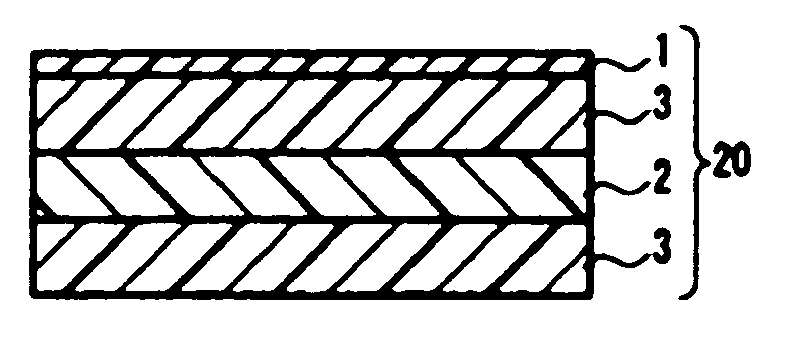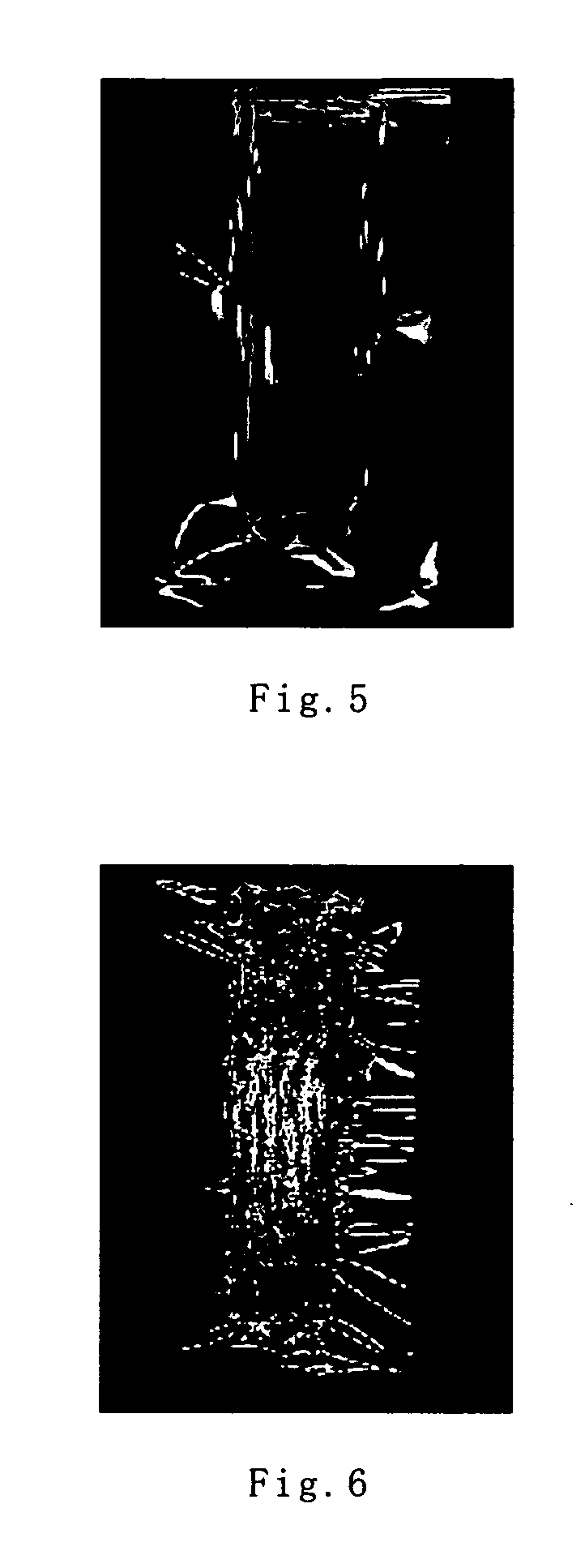Optical film, liquid crystal panel including the same and liquid crystal display
a liquid crystal display and optical film technology, applied in the direction of instruments, polarising elements, transportation and packaging, etc., can solve the problems of reducing display characteristics, thick and heavy obtained display, and difficult to achieve uniform alignment in a wide area, and achieve low solvency, high solvency, low solvency
- Summary
- Abstract
- Description
- Claims
- Application Information
AI Technical Summary
Benefits of technology
Problems solved by technology
Method used
Image
Examples
example 1
[0118] Using 2,2′-bis(3,4-dicarboxyphenyl)hexafluoropropane acid dianhydride (6FDA) and 2,2′-bis(trifluoromethyl)-4,4′-diaminobiphenyl (PFMB), polyimide (Mw=177,000) formed of the repeating unit represented by the formula (1) was synthesized. This polyimide was dissolved in MIBK, thus preparing a 14 wt % polyimide solution. After the polyimide solution was applied to a transparent film (having a thickness of about 55 μm), which will be described below, it was dried at 100° C. for 5 minutes and then dried at 150° C. for 20 minutes. In this manner, a polyimide layer (a birefringent layer) (having a thickness of 5.0 μm) was formed on the above-mentioned transparent film. The polyimide layer in the resultant optical film had a refractive index of 1.55, a birefringence (Δnxyz) in the thickness direction of 0.041 and a transmittance of 92.1%.
[0119] The above-mentioned transparent film was produced as follows. First, 65 parts by weight of a glutarimide copolymer of N-methylglutarimide and...
example 2
[0120] As described later, using 2,2′-dichloro-4,4′,5,5′-biphenyl tetracarboxylic acid dianhydride (DCBPDA) and 2,2′-bis(trifluoromethyl)-4,4′-diaminobiphenyl (PFMB), polyimide (Mw=82,500) formed of the repeating unit represented by the formula (2) below was synthesized. Except for using this polyimide, a polyimide layer (a birefringent layer) was formed on the transparent film similarly to Example 1 described above, thereby producing an optical film. The polyimide layer in the resultant optical film had a refractive index of 1.57, a birefringence (Δnxyz) in the thickness direction of 0.075 and a transmittance of 90.4%.
[0121] The above-noted DCBPDA was synthesized as follows. First, 27.2 g (0.68 mol) NaOH was dissolved in 400 ml water, and 5.0 g (0.17 mol) 3,3′,4,4′-biphenyl tetracarboxylic acid dianhydride (BPDA) was dissolved in this NaOH aqueous solution. This solution was heated up to 100° C., and a chlorine gas was injected into the solution, whereby 5 minutes after the injec...
example 3
[0124] Except for using a TAC film with a thickness of about 80 μm (trade name UZ-TAC; manufactured by Fuji Photo Film Co., Ltd.) instead of the transparent film, an optical film was produced similarly to Example 1 described above.
PUM
| Property | Measurement | Unit |
|---|---|---|
| transmittance | aaaaa | aaaaa |
| thickness | aaaaa | aaaaa |
| temperature | aaaaa | aaaaa |
Abstract
Description
Claims
Application Information
 Login to View More
Login to View More - R&D
- Intellectual Property
- Life Sciences
- Materials
- Tech Scout
- Unparalleled Data Quality
- Higher Quality Content
- 60% Fewer Hallucinations
Browse by: Latest US Patents, China's latest patents, Technical Efficacy Thesaurus, Application Domain, Technology Topic, Popular Technical Reports.
© 2025 PatSnap. All rights reserved.Legal|Privacy policy|Modern Slavery Act Transparency Statement|Sitemap|About US| Contact US: help@patsnap.com



